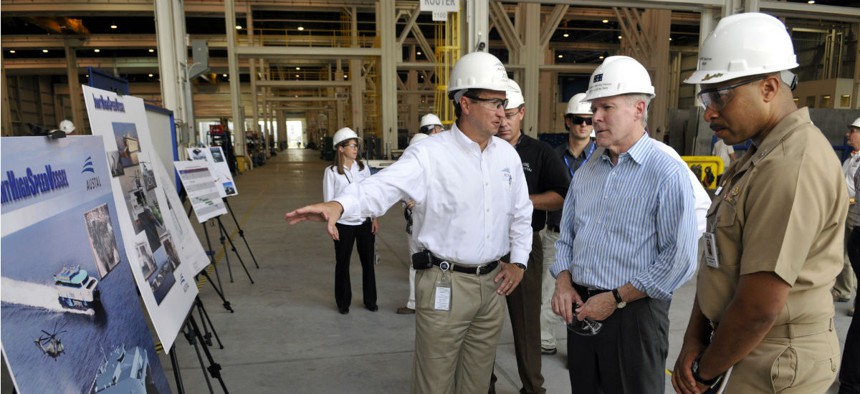Pentagon Needs to Set Clear Goals to Improve Acquisition Workforce
GAO notes improvements in how the department administers its workforce development fund, but says more needs to be done.
A Defense Department program aimed at improving the quality of the Pentagon’s acquisition workforce needs to establish concrete time frames and metrics for measuring success, the Government Accountability Office found.
Congress established the Defense Acquisition Workforce Development Fund in 2008 to provide Pentagon officials with a dedicated funding source to recruit, train and retain skilled staff—the program managers, contracting officers, engineers, cost estimators and others who award and administer more than $250 billion in contracts annually. Steep personnel cuts in previous years had left the department heavily reliant on contractors, and lawmakers were concerned that Defense wasn’t effectively managing its programs.
But for years, the department struggled to allocate funds in a timely way, in part because the bulk of money for the fund is contributed by Defense agencies and the military services based on what those components spend on contract services. It took as long as 24 months to remit the payments through the comptroller, which resulted in considerable delays.
Last year, Congress took action to address the funding issues, and GAO found that the delays have largely subsided.
Since its inception, DAWDF had been focused primarily on growing the Defense Department's acquisition workforce through recruitment and retention. But last fall, officials adopted a new strategic plan, which calls for shifting the fund’s efforts toward maintaining the current number of employees and improving training, professionalism, policies and procedures.
“DOD’s use of DAWDF is at a critical juncture, in which it will no longer use the fund to grow the workforce, but rather to sustain and build on the progress made over the last nine years,” auditors wrote. “[The department’s] October 2016 strategic plan provides an overall framework for the acquisition workforce and broadly indicates how DAWDF will be used to support these efforts, but it does not identify time frames, metrics or projected budgetary requirements associated with these goals or strategic priorities.”
GAO officials also raised concerns that there is not a consistent opinion on how funds can be used by individual agencies within the department. Whether DAWDF funds can be used to pay the salaries of those tasked with managing and administering the program is a particular problem, the auditors wrote, noting that several organizations within the department use DAWDF money to pay for functions associated with fund administration, while others argue that money from the fund must be restricted to things like hiring, training and retention efforts.
Alan Chvotkin, executive vice president and counsel for the Professional Services Council, a government contractor industry group, said the recent improvements to DAWDF’s funding mechanism is good news. But he said it’s important that officials iron out any remaining kinks.
“It’s absolutely true that contractors are heavily dependent on a well-trained and knowledgeable federal—or, in this case defense—acquisition workforce,” he said. “But budget reductions, the change in [presidential] administration and all of the uncertainty about the government economy, all of those things will have an impact on the acquisition workforce.”
Chvotkin said it is perfectly reasonable to spend a small proportion of the fund on administrative costs and salaries, but the department should establish a standard across its component agencies and stick to it.
“My own view is that if you have a fund, someone has to administer it,” he said. But that raises questions about which administrative activities should be covered, and at what rate. “Is 1 percent enough? Is 2 percent too much?”
GAO recommended that Defense adopt a consistent policy on the use of DAWDF funds for administrative costs and develop processes to verify the accuracy and completeness of data related to the execution of the fund’s goals.
Defense officials agreed in part with the recommendations, noting that the department already has made significant changes to improve the accuracy and completeness of data on initiatives funded by DAWDF, including the assignment of a full-time program manager for the fund.
NEXT STORY: Trump's Border Barrier Hits a Wall




